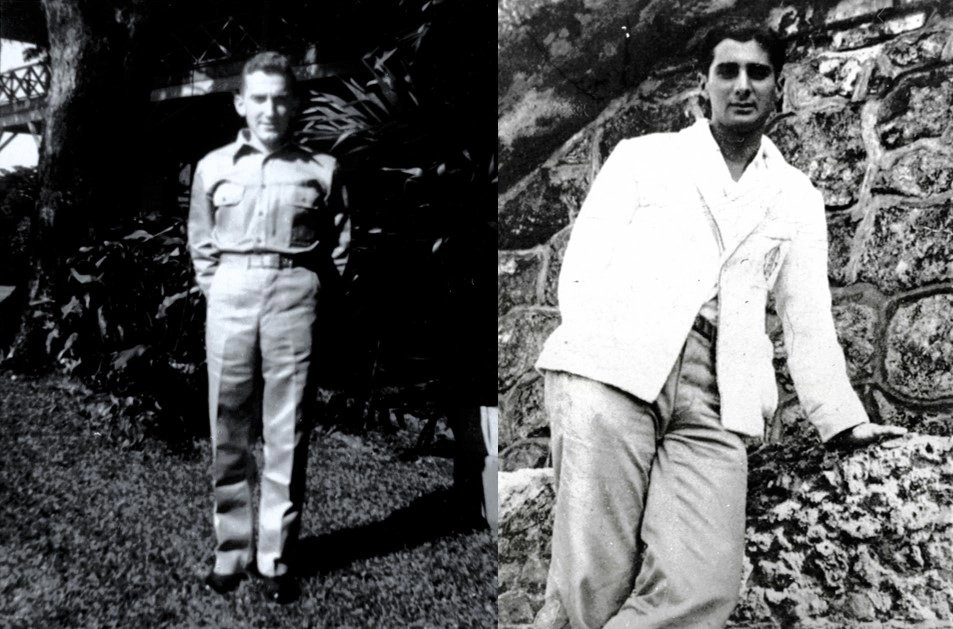On 24 September 1942, three men serving in the Philippines with the Second Signal Service Battalion were imprisoned by the Japanese after eluding capture for almost six months. Two of these men were later inducted into the Military Intelligence Hall of Fame.
By the time the U.S. entered World War II in December 1941, Detachment 6 of the battalion was stationed in Corregidor on the island of Luzon, Philippines. The signal intercept operators assigned to this unit listened to radio transmissions to identify pending enemy air raids over U.S. airbases. As the Japanese began invading the South Pacific islands in the spring of 1942, the U.S. Signal Corps feared a collapse of operations in Bataan and Corregidor. Consequently, it began transferring its intercept operators to Australia to develop a radio intelligence network there. On 1 April 1942, the eleven men from Detachment 6 who would “form the nucleus” of signal operations in Australia flew out of Bataan Airfield and landed at Del Monte Airfield at Mindanao, a large southern island of the Philippines.

Due to a delay in flights out of Mindanao, the radio intercept team set up a small operation near the airbase and waited. Senior officers took most of the open seats on the few flights leaving the island, so six of the men from Detachment 6 were left behind in the Philippines while their superiors went on ahead. Plane after plane left without the remaining men. Cpls. Irving A. Stein and James Rhen, as well as Pfcs. Stanley W. Kapp, Michael Maslak, Paul Gill, and Jay A. Bradbury were still on Mindanao Island when the Japanese invaded in early May 1942.
Rather than wait to be captured, the six men decided to take to the hills to outrun the enemy invasion. Over the next several weeks, their numbers would fluctuate, from six to three to five, until early June, when Stein, Kapp, and Maslak, joined by Cpt. George Lindahl and Sgt. J. D. Biss of the U.S. Air Corps and three young Filipino men, procured a boat and attempted to sail for Australia. Corporal Stein had led the men’s flight through the wilderness, but when he fell ill
during the journey from malnutrition and injury, Private Kapp took on the leadership role on the boat. Maslak later described Kapp as an “authentic Robinson Crusoe.”
The group traveled approximately 650 miles before landing on an island in New Guinea on 10 July. However, on 24 September 1942, the five Americans were captured by the Japanese and deported to Tantui prison camp at Ambon Island in the Dutch East Indies (present-day Indonesia). Private Maslak, Captain Lindahl, and Sergeant Biss all survived captivity at the horrendous Ambon prison, where approximately one-third of the small population—primarily members of the Australian Gull Force, 2/21st Battalion—died from malnutrition and starvation. On 18 January 1945, Private Kapp died from tuberculosis, likely brought on by these same conditions; Corporal Stein died on 26 July 1945 from beriberi disease and digestive failure.
In 1988, both Kapp and Stein were inducted into the Military Intelligence Hall of Fame and, in 1994, Fort Huachuca dedicated a barracks in Kapp’s honor. Reports after the war indicated Private Bradbury died while imprisoned in the Philippines. Corporal Rhen and Private Gill both joined ad hoc guerrilla units in Mindanao. Though Rhen was later killed by an American soldier during an altercation, Gill survived and became a lieutenant among the guerrillas before he was evacuated in March 1944.

